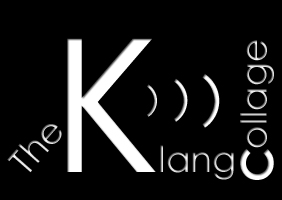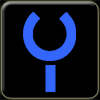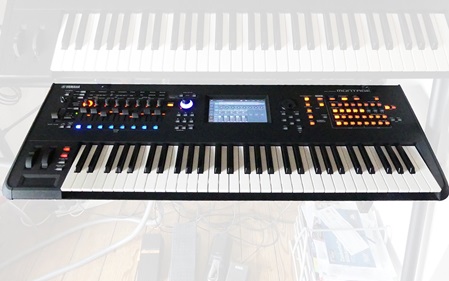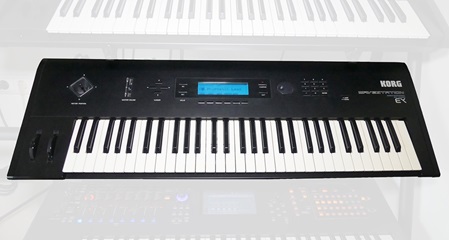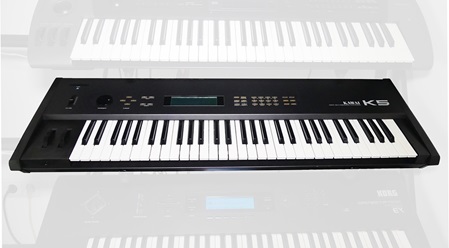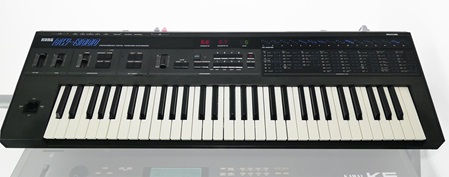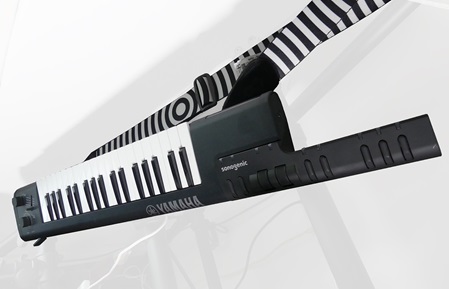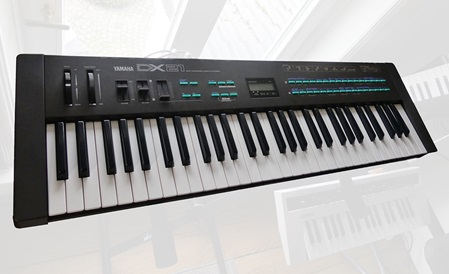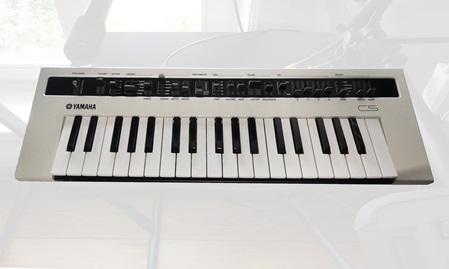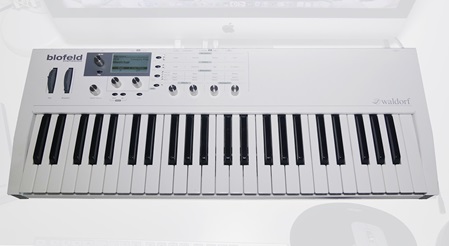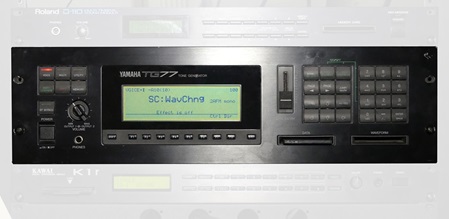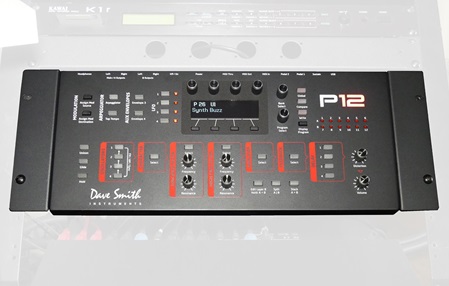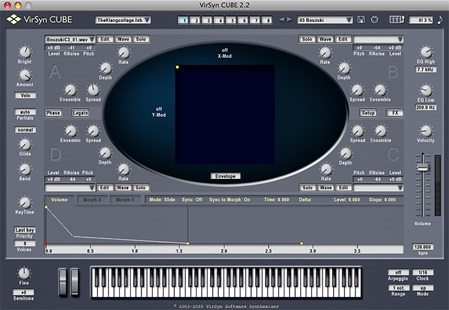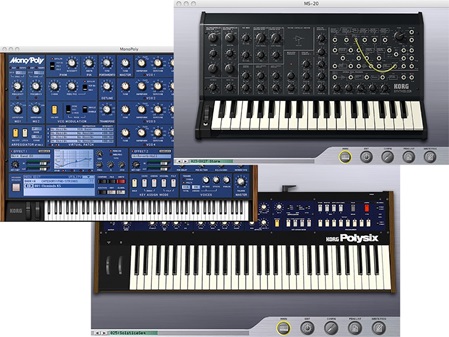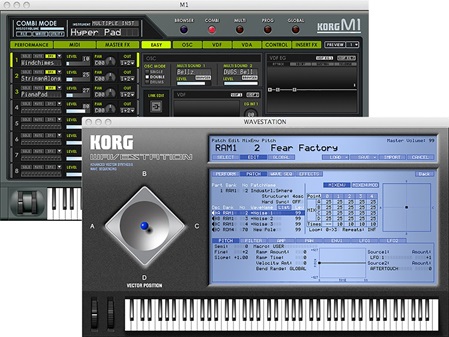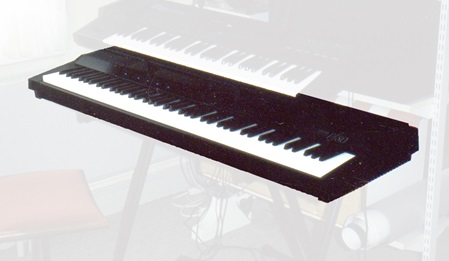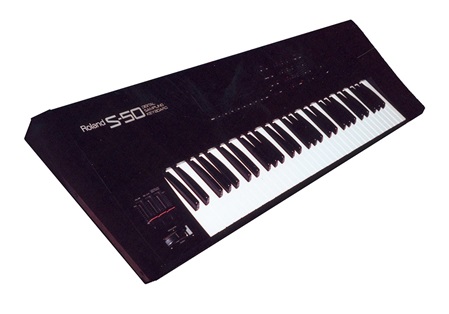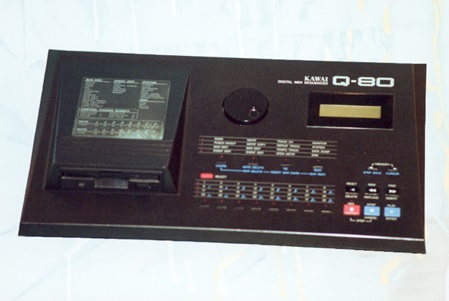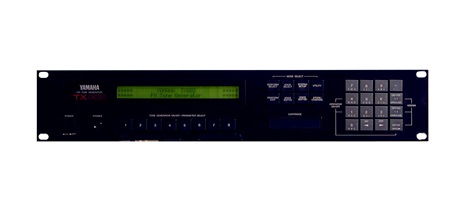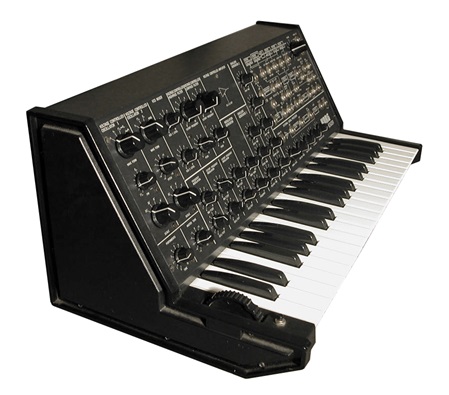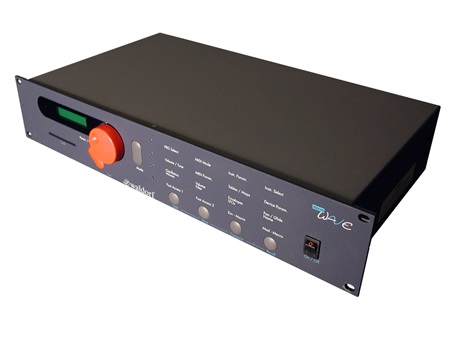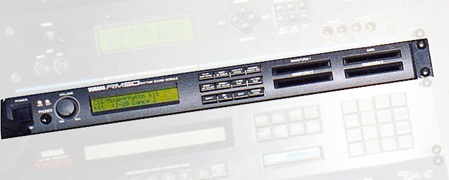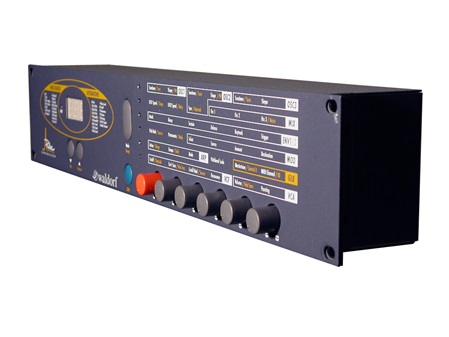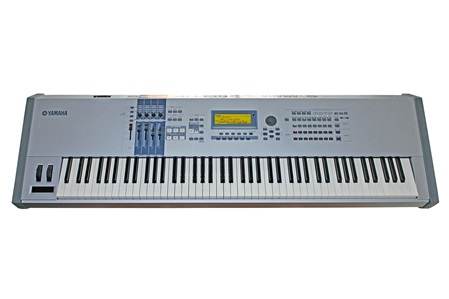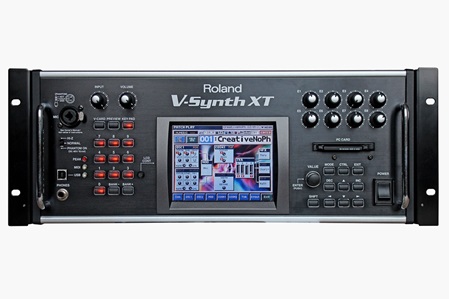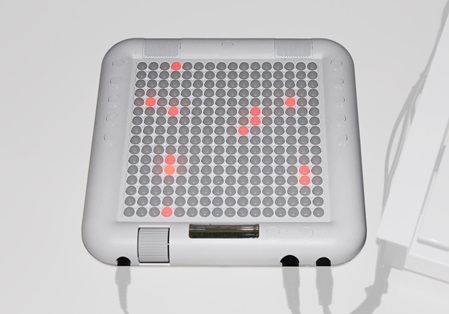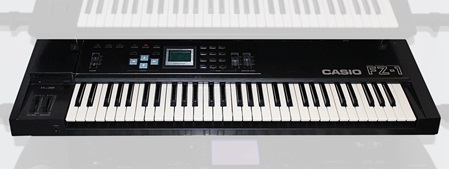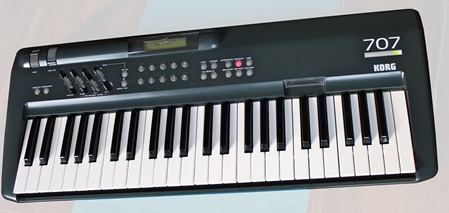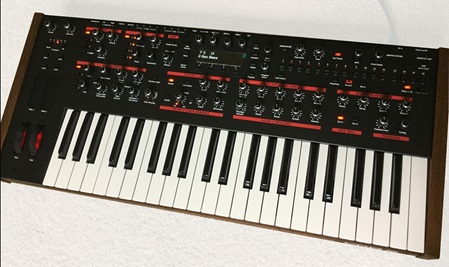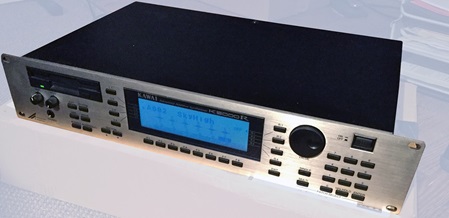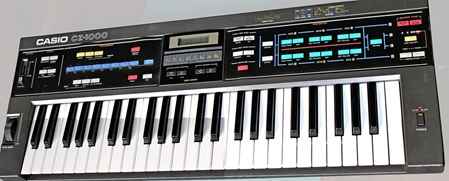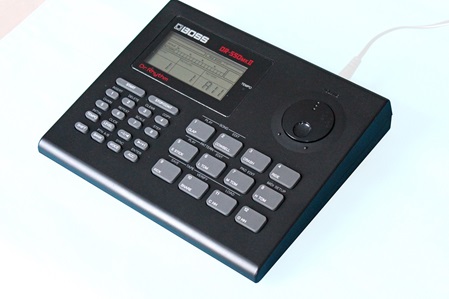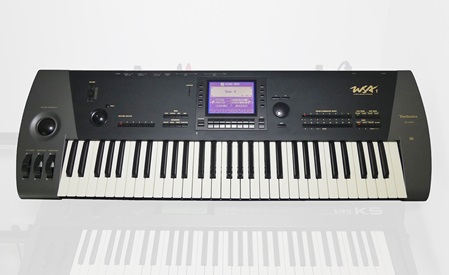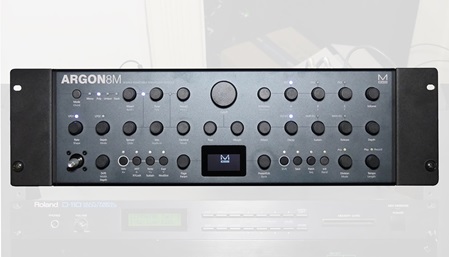Gear Currently In Use
Yamaha MONTAGE 6 Music Synthesizer
At first sight the MONTAGE feels a bit like my old TG77: combining sample playback with FM synthesis. Of course AWM is much improved, as is the FM engine with 8 operators and 88 algorithms. But there is more: the whole control concept adds a completely new dimension to it, in that you can control things in FM never be possible before. And even for the AWM side it opens up options for many kinds of realtime control from analog style feeling (cutoff, resonance, envelopes etc.) to life-mixing between different sampled sounds. It definetely takes ages to explore its capabilities.
Korg WAVESTATION EX Advanced Vector Synthesis - Wave Sequencing
Still one of my favourite synths; though it is based on samples, you can get to completely different worlds of sound. The combination of technologies such as Wave Sequencing and Vector Synthesis plus a highly complex voice architecture make this synth an incredibly versatile beast. It has its very own character even today, partly due to the technology from that time. After all, it sounds really unique. You might hate it or love it.
Kawai K5 Digital Mutli-Dimensional Synthesizer
The K5 is back in my set up! I owned one of these in the early nineties, but I was young, rather unexperienced in sound programming and not really able to cope with the additive synthesis the K5 offers. It wasn´t the right sound, which I needed and wanted and although I understood the basic principle, I couldn´t get any usable sounds from it, except for using the presets.
Basically the K5 works entirely with harmonics. Two sound sources can create a spectrum of 63 of them, where each harmonic can be allocated to one of four dedicated envelopes. Next follows a filter, which again works by controlling the harmonics. Finally, besides the usual amp stage, a formant filter with fixed frequencies helps to further shape the result.
Due to it´s design the K5 has a very unique character and it can be difficult to control the sound, especially when applying dynamic control, e.g. via velocity. Still it can create an interesting range of sounds somewhere in between analog subtractive and digital FM synths.
Korg DW8000 Programmable Digital Waveform Synthesizer
Released in 1985, the DW8000, same as it´s predecessor DW6000 from earlier that year, were Korg´s approach to keep up with Yamaha´s DX line of hugely popular digital synths. They didn´t come up with an entirely new synthesis method like Yamaha, but stayed with the subtractive scheme. But they introduced digital oscillators and a tiny wave memory, so they could squeeze 16 different waveforms in. This was seen as a major advancement to analog oscillators. The filter and amp remained analog and the combination of these digital and analog components allows the DW8000 to create a wide range of unique and tasty sounds.
Yamaha SHS500 Sonogenic
Admittedly the SHS500 is not a synth and not even a great preset keyboard. The small selection of onboard sounds has a decent quality, but covers the few most basic needs at best.
But with modern connectivity via USB or Bluetooth, it is a very handy, lightweight version of a keytar. The keybed, despite featureing mini keys, feels excellent and provides very playable velocity control. Playback music can be mixed with it´s own sounds internally, allowing for anytime practicing without the need to switch on a load of gear first.
And I just love the futuristic look, which reminds me a bit of classic Yamaha designs such as the G10 MIDI guitar or the WX series of wind controllers.
Yamaha DX21 Digital Programmable Algorithm Syntheiszer
When I was a young kid in the 80s, I visited my friend. He said "my older brother just got his first synthesizer, do you want to see it?" and I said "yes, of course". It was a Yamaha DX21, so this became the first synth I ever laid my hands on. But besides this emotional relation to the DX21, it still provides that classic digital FM sound character and while operating the unit is quite tedious to todays standards, I am using different options with my computer and tablet.
Yamaha REFACE CS Synthesizer
This was my first successful try to go for a simple analog style synthesizer. And this time it worked: it´s got great sound, a decent keybed and a brilliant user interface. Especially the latter invites to dial in sounds, which takes seconds for a classic synth sound, but still leaves enough room for experimentation with hard sync, ring mod or FM.
Waldorf BLOFELD Synthesizer
Originally I was looking for a kind of master control keyboard to place it on my desk in front of the computer. I checked all the available USB control keyboards, but couldn´t find something suitable. Mostly the keybed quality of available products didn´t convince me. So I also considered keyboard synthesizers, both current and older products. Finally I ended up with the Blofeld, although I had not really fallen in love with the original Microwaves wavetable System some years ago. But for some reason with the Blofeld and its extended capabilities it worked out fine, besides being a decent master keyboard with velocity (including even release velocity) and aftertouch. I quickly managed to program some exciting sounds with it, so it fulfills my desires in two ways, as a master control for my rig and as a great synthesizer. Of course I also realised its shortcomings: while the overall build quality is great, especially the knobs are not as reliable as they should be.
Roland D110 module
The Roland D20 had been my first synthesizer/workstation, which I used to create a long list of songs. And everytime I listened to them later on, I felt an urge to have that typical, sometimes gritty sound again. So now it is back as a D110 module and it brought back many good memories. Essentially it is a D50, with some improvements and some limitations in comparison. And same as the D20/D10 it provides additional drum samples, that can be arranged to a set on a dedicated drum channel.
Same as my Kawai K1r, both being 1HU rack synths, operation is rather cumbersome, so I created an editor in MIDI Designer on my iPad. Remebering the structure of tone generation from my young days, creating sounds is now a breeze.
Yamaha TG77 Tone Generator
After I sold my TX802 I used the PLG150DX plug-in board in my Motif ES (another nice feature of that workstation). However you cannot programm any sound onboard and the editor software does not really makes things easier and is outdated anyway. So as I always considered the SY77/99/TG77 to be the pinnacle of hardware FM synths in terms of programming flexibility, I went for this one. And indeed it provides a lot of features I missed in other FM systems and some more. Not easy to program because of so many parameters to be set, but they did a great effort to make things as easy as possible (at that time).
Kawai K3m Synthesizer Module
The K3 / K3m look like Kawai´s answer to Korg´s DW line and Yamaha DX synthesizers. But very similar to Korg they exchanged the analog oscillators from the older concepts to digital ones. The rest of the parts, filter and amp, remained analog. The K3m offers 32 different waveforms to choose from, which then run through the classic SSM filter, which gives the synth a juicy and quite big sound. A speciality is the user waveform, where you can create your own unique sound by using additive synthesis. It is pretty tedious to use and you hear the result only after rendering your settings.
Kawai K1r
The K1 was a budget synth from Kawai, launched in 1988. To match the neccessary price point for a commercial success, they tried to make it as simple and thus affordable, yet as appealing to customers as possible. They threw in lots of complex digital waveforms and even squeezed some sampled sounds into the tiny wave ROM. They provided a 2 or 4 element structure, each element being a waveform or sample with envelope and some modulation. And to make up somehow for the lacking filters, they implemented amplitude modulation to allow a kind of spectral shaping of the sound. After all, despite of its shortcomings, it allows for some surprisingly dynamic, interesting sounds and a load of 80s classics.
Dave Smith Instruments PROPHET 12 Module
Since the analog hype took really off in the early 2010s with lots of new products, I could not really get into it. Those products are mostly not for expressive keyboard playing and more or less re-use technology from the 1970s. Which isn´t bad at all, if you are into sequencer-controlled electronic music, but for me it started only with the return of classic analog keyboard synths, such as the ones from DSI. But I was still looking for something more unique and this finally came in form of the Prophet 12. It combines digital oscillators, which allow for a great variety of sound variations already at the starting point, combined with a great sounding analog filter and amp plus effects. While the module admittedly lacks the immediate access of the keyboard version with its loads of knobs, it is still very usable.
Virsyn CUBE 2 Spectral Morphing Resynthesizer
What I had missed in the Kawai K5 I found in this software: a way to use additive synthesis to get interesting, useful results with ease. You can draw spectra with a move of the mouse rather than adjusting each single overtone´s level, envelope and LFO routings. Also since version 2.0 you can input a sampled wave and it will analyse the spectrum, which you can then tweak or use for REAL morphing - voilá: resynthesis!
Korg LEGACY COLLECTION - Analog Edition 2007
As the owner of an old MS20 I was a bit reluctant to try the first edition of Korgs VST instruments. But when this collection came out in 2007 and included the great Mono/Poly, I decided to go for it. Well, I never really made the direct comparisson between original and emulated MS20 and actually I don´t care too much about whether it sounds exactly same or not. As long as it sounds good it is ok! And at least the concepts are there: the simple but efficient structure of a Polysix, the fat 4-oscillator sound of a Mono/Poly and the rather experimental patchpanel of the MS20.
Korg LEGACY COLLECTION - Digital Edition
The Digital Edition includes 2 of Korgs digital classics: the M1 and the Wavestation. Now the M1 is in my opinion not really a great synth: it was rather a great workstation when it came out, providing multi-sampled sounds, sequencer and effects in an affordable package. However in terms of creative synthesis it´s capabilities might be a bit limited. On the other side the Wavestation is a fantastic instrument, that offers endless possibilities to create fresh sounds up to today. And while I would prefer my old hardware Wavestation in terms of the UI, the software version offers a resonant filter and as a VST instrument is comfortable to use in a DAW.
Previously Used Gear
Yamaha PF80 Electronic Piano
My very first electronic instrument, it had basically the tone generation of a DX-7 with only some preset piano-like sounds. The “acoustic” pianos were far from authentic of course and only usable with a fair amount of synth nostalgia, however the e-pianos and vibraphone were fantastic and had a certain richness to them, which I could never get from my TX802 or TG77 with their newer, improved, higher resolution tone generators. With 88 weighted keys, a robust cabinet and built-in speakers it was quite heavy, especially when carried around in the wooden flightcase making a total of around 50kg.
Roland D-20 Multi Timbral Linear Synthesizer - Multi Track Sequencer
My first real synthesizer and even a full workstation with 8 track sequencer (realtime recording only), a pattern based drum computer and simple reverb and delay effects. I made my first complete songs on this machine. The tone generation was an offspring of the D-50, but I never understood the actual differences: from the variety of structure it looks superior to the D-50, but sound quality is said to be worse (maybe shorter samples and less quality converters?). 2 pairs of partial sounds could be used, the configuration of each pair is set by a “structure”: simple mono mix, one partial left and one right, mixed with ring modulation etc. The structure also sets each partial to either “synth” or “PCM”. “Synth” means saw or square through a filter (with resonance) and amp, “PCM” means a sample from the internal ROM (single attack samples or looped waveforms) through an amp envelope –no filter here. Preset sounds were typical for the time, but not at all what I was looking for, so I started to program my own ones – and found many surprisingly inventive sounds, partly because of the low resolution of a late 80s sample playback engine ;)
Roland S-50 Digital Sampling Keyboard
I went out to find a (used and hopefully cheap) Casio FZ1 and came back with this one, as well second-hand. Ok, it had only 0.5MB RAM and sampled at 12bit only. There was no dynamic filter and the display was a 25 character LED, but when you connected an external CRT, it became amazing: you could see waveforms, cut and loop them and organize your samples on 2HD floppy disks. You felt like working on a budget Fairlight. Additionally there was a digitizer tablet available for waveform drawing, however I am not sure how useful this would be – but even more Fairlight feeling, right?
Kawai Q-80 Digital MIDI Sequencer
32-track hardware sequencer; tracks can be recorded realtime or just handle separately stored patterns (so-called “motifs”); after the 8-track realtime-only sequencer of the D-20 this was a great improvement. Every kind of event in a track or a motif could be set or adjusted manually. The only drawbacks I remember were the tiny LCD (2x16 characters, you had to be well organized to keep the overview over your song content) and the missing numeric keypad: heading to a certain song position could require quite a lot of dial use.
Roland S-330 Digital Sampler
A rack-mount successor for my S-50; now I even had a mouse along with the external CRT, so it was really like working on a PC. It had the dynamic resonant filters the S-50 was lacking, which sounded pretty good for an early all-digital filter. Plus I could finally draw waveforms. Indeed that turned out to be less useful for making new waves from scratch, but came in very handy for erasing unwanted clicks from existing samples. The overall sound quality was considered excellent back in the days and is nowadays famous for it´s gritty sound. ;-)
Yamaha TX-802 FM Tone Generator
My first fm-synth; the power of 8 x DX7II, although with a total of only 16 notes polyphony; I had to really dig deep to overcome the preset voices (which were outdated attempts to emulate "real-life" sounds) and build my own ones. I even read a book about FM and one by one I got quite nice results. Especially I liked the expression you can get from FM when you set the controllers right.
Korg DRM-1 Digital Rhythm Module
I used this mainly as a drum trigger to MIDI converter with two Simmons Hexapads, since the DRM-1 provides 8 trigger inputs. But later I realised the wonderful gritty drum samples were quite usable. I still keep samples of those sounds. Quite cool was the operation using an infrared remote control, similar to those of TVs etc.
Korg MS-20 Synthesizer
Though I never integrated it to my MIDI system for many years, from time to time I loved to turn it´s knobs and listen to that raw, powerful sound; I got it second-hand from a friend, but had to promise not to sell it again right away, just to make profit - no problem, kept it for many years. Later I ran it via a Kenton USB MIDI to CV/gate interface for full DAW integration (well, as much as possible) and it was pretty nice for vintage type synth FX and basses. The keybed however was maybe the worst I ever laid my hands on, so I sometimes just sampled its sound and created more dynamic sounds in the sampler.
Waldorf MICROWAVE Wavetable Synthesizer
The original one with analogue filters - a pretty special machine with a very unique sound. I did´nt know much about the old PPGs, so it took time to understand the concept. Still at that time I hardly managed to get sounds from it, that were suitable for my style of music making. I used it with the Access Microwave Programmer, which was quite helpful for the main settings, but the details still needed to be done on the MW itself. Later on I did much better with the Blofeld, although probably nothing can replace the MW filters, they just sound great.
Yamaha RM50 Rhythm Sound Module
For years I had been using drum sounds provided from synthesizers, such as in the Roland D20/D110, the Korg Wavestation and of course drum sounds from my samplers. At some point I wanted to try a dedicated module and the RM50 provided a huge variety of high quality drum and percussion sounds. However the organisational structure was a bit complicated and programming original sounds based on the internal samples was no big fun with the limited UI and display. When I got a Motif ES, the RM50 finally became obsolete for me.
Waldorf PULSE Synthesizer
A cool little machine for phat sounds - real analogue circuitry, just monophonic, but with MIDI. So the first analog synth I really used (besides the MS20, which I hardly used at that time because of the lack of MIDI) came from a company that has nothing to do wiith one of the great old manufacturers. But it is not so surprising as those old big names had all gone and Waldorf were probably the only ones making analogs. The UI, a typical Axel Hartmann design, showed a quite nice balance between good usability and a good price point of the instrument. However the 3-digit LED display made editing not as fluent as it could have been.
Yamaha MOTIF ES8 Music Production Synthesizer
The Motif ES is a typical workstation, feature-loaded from the tone generation to the effects, audio and MIDI sequencer and remote control. Actually I used mostly the sample based tone generation, which is really not something inviting you to very creative sound design, but it provides masses of high quality sounds including all kinds of typical synth sounds as well as all the other emulating stuff such as piano, strings, brass etc (if so wished). I always found myself using some of those ready-to-go sounds, whenever they just fit perfectly into some musical situation. Furthermore the ES series allowed (contrary to the newer Motifs) to install special plug-in boards, which bring a whole new tone generation into the instrument. For example I had the DX board (complete DX7 FM), the AN board (virtual analog based on the AN1x or AN200) and the VL board (physical modelling like in the VL-70m). Also I used the DAW remote control section, which allows to control transport as well as some basic mixing functions of my Cubase. But one of the best things to me was the weighted 88-keys keyboard, which feels just great and allows for a great expressivness in many situations.
Roland V-SYNTH XT Synthesizer Sound Module
The V-Synth was one of the most innovative pieces of gear that came out in the early 2000s. Is does not (only) emulate analog synths in a very flexible way, but offers a completely new way of handling sound, that was never before available in an affordable hardware product. Because it can play back samples without the usual limitations in terms of playback speed and transposed formants. Roland won´t say what exactly it is, but there must be granular synthesis working in the background, which allows the user to treat pitch, speed and formants independently. Forget about multi-sampling - here you can work with samples in a really creative way!
Yamaha TNR-O Tenorion
Ok, the Tenori-On is NOT a great synthesizer! But that is simply not it´s main purpose: it is the sequencer that makes this piece of gear so outstanding. While the tone generation is obviously a simple standard wave playback engine, the different modes for recording and playing back notes provide some completely new ways of creating music. Yes, you can achieve the same result with your DAW software, but it would probably take ages, while Tenori-On makes it so quick and easy to construct exciting patterns with unusual rhythmics.
Casio FZ1 Digital Sampling Synthesizer
When I planned to buy my first sampler back in the days, the Casio FZ1 was the latest big hit. However I couldn´t afford a new one, didn´t find a used one for a good price and ended up with a used Roland S-50 (which definetely had its strengths despite the lacking filter). Some years ago I made this dream of my young days come true, however of course this sampler is not at all up to todays standards in terms of capacity. I equipped it with the SD card based floppy emulator from HXC (built and sold by Lotharek), which works really fine and I also spent money for the memory expansion to 2 MB (no, not terabyte, really megabyte!). The FZ1s sound is great, very vintage with typical artefacts so sought after today and it offers great capabilities in terms of synthesis. I just couldn´t stand the tedious operation with too many button presses (although the graphical display is quite nice).
Korg 707 Performing Synthesizer
Another little dream of my young days, since the 707 looked cool, used latest digital synthesis (actually Yamaha´s FM tech with a different UI) and could even be used as a keytar, using a guitar strap. But it was later on the Roland D20 being my first synth.
Same as the larger DS8 the 707 provides FM sound with a UI mimicking an classic subtractive synth scheme. A few years ago I took the idea further and made an "analog" editor for my DX21.
It didn´t stay though, since it covers the same sonic territory as my DX21 and the response to MIDI, especially continus control, is just too slow.
Dave Smith Instruments PRO 2 Multi-Filter Mono/Paraphonic Synth
My first attempt with a Dave Smith (now Sequential Cisrcuits again) synth. I loved the concept of flexibel digital oscillators including wave morphing with different analog filters. It sounded great, but too often I found myself trying to play those gorgeous sounds polyphonically. The provided paraphony didn´t really help me, it´s not the same as real polyphony. In the end I went for the Prophet 12 instead, which lacks some capability of the Pro 2, but shares the most stuf and is really polyphonic. Probably I am just not the mono synth guy.
Kawai K5000r Advanced Additive Synthesizer
After my first experiences with additive synthesis of the Kawai K5, I wanted to try it´s successor K5000, which had appeared about 10 years after the K5. It provides individual envelopes per harmonic and many other improved features on nearly all sides.
It didn´t stay, since despite providing a range of features to make additive synthesis easier and faster to program, I never managed to really dive into sound creation. It appeared too complex and tedious both from the structure and the sound parameters to me. I am now happy with a K5 again, which is still easier to handle and provides it´s own sonic character.
Casio CZ1000 Cosmo Synthesizer
One more "dream" (affordable) synth from my young days and a similar package as the Korg 707 with 4 octaves keyboard and optional keytar usage (I tried it, it doesn´t feel weel though hanging over the shoulder, too bulky and heavy).
Of course it delivers this typical characterful CZ sound, just my unit wasn´t in best shape and having only 16 memory slots for original sounds was too limiting for me. Also it does not even respond to velocity, so any kind of expressive playing is impossible. In the end this was the deal breaker for me.
Boss DR-550 Dr. Rhythm
Having used a DR-550 in a synth band in the early 80´s I wanted the sound back. And the DR-550MKII delivers as well as the original model. Punchy digital drum and percussion sounds with an own character from today´s point of view. However I realised that I never used it as a drum computer, but just as a sound source, so it wasn´t really useful to have the whole package.
Technics WSA1 Acoustic Modeling Synthesizer
When it came out it was a dream machine, very capable and extremely expensive. It promised a sort of physical modeling with 64 notes polyphony - remember the more than double-priced, duophonic Yamaha VL-1? My impression of the WSA1 is, that getting realistic emulations with all the original expression is not it´s strength - mainly because of the mid 90s sample ROM, which it uses instead of modeling the driver, to get the polyphony. However it can produce very nice organic synth sounds and add a fantastic expresiveness to them, which is what I actually prefer.
Modal Electronics ARGON8M module
The Argon8M got my attention because of the modern approach to wavetable synthesis. While two oscillators can play different wavetables, each of them is actually two oscillators in one, which can be detuned and feature hard sync, AM, RM, FM etc. This allows for a wide range of tones already at the source of the sound. Combined with a digital, but very smooth and rich sounding filter and a load of modulation options it gives me huge sonic palette. And it is still rack mountable, which is a rare case these days.
